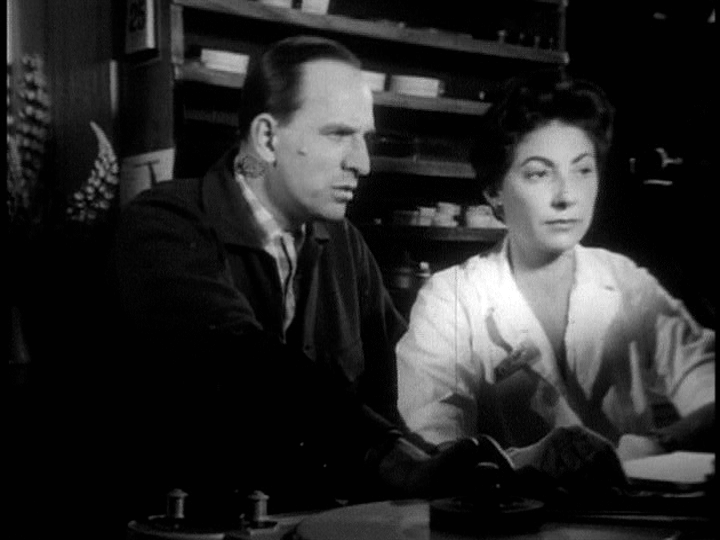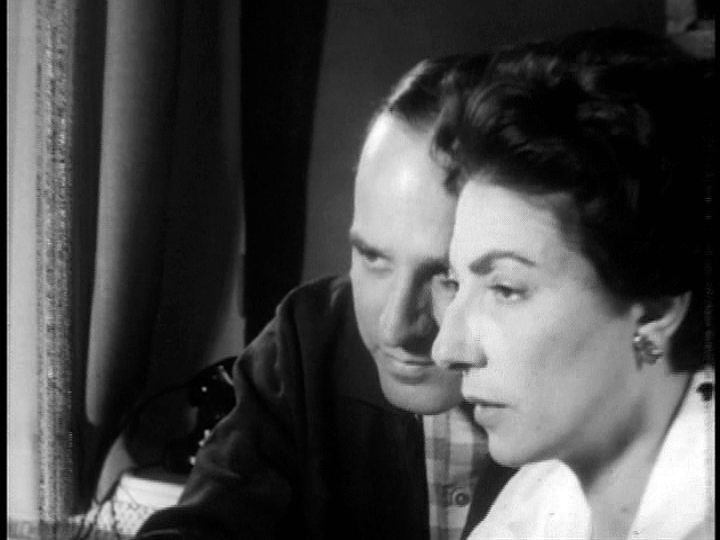Ulla Ryghe was an adventurous and enterprising woman who practiced her profession as editor and script supervisor in Sweden, Canada, Australia, Italy, France, Brunei and Singapore. Her bustling curiosity and passion for the magic of visual storytelling – largely brought to life in the cutting room – also led to her becoming involved in the coaching of new generations of editors in Stockholm, Sydney and Bandar Seri Begawan, among other places. But she did not like being called “Bergman’s editor”.
During the war, Ulla Ryghe first thought of getting an education as a farmer. She worked on a farm in Skåne, but soon realized that she was much more interested in art and culture. Instead, she began studying art history in Lund and got to practice at the National Museum, where Ragnar Josephson (Erland Josephson’s uncle) became her mentor. She continued studying literature history in Lund and joined a theatre group in Malmö. She discovered that she was going to be an actress, went to the Gösta Terserus theatre school and aimed to get into the Royal Dramatic Theatre. When she didn’t get in, she changed course again and started working as a journalist, including at Göteborgs Handels- och Sjöfarts-Tidning during the legendary Torgny Segerstedt’s time as editor-in-chief. She continued as a journalist at Dagens Nyheter and married DN journalist Hans Werner and then worked at Aftonbladet. In the mid-1950s, when television made its way into Swedish homes, she first applied to Svensk Filmindustri, SF, who then also produced documentary films. When she didn’t get a job there, she instead applied to Europa Film, where, without any particular experience, she had to substitute as a negative editor and then became an assistant to the editor Wic’ Kjellin. The ulterior motive was to work with the new medium of television as a journalist and trained editor. Ulla Ryghe learned the craft quickly and methodically under Kjellin’s guidance and was increasingly fascinated by the practical-artistic work. Oscar Rosander, Bergman’s editor, was the grand old man of Swedish film editing, and as his assistant at SF, one of her first assignments was to mark up a working copy of The Devil’s Eye (1960). Her first meeting with Ingmar Bergman turned out to be a disaster – when the opening scene was shown in the film’s working copy, it turned out that Ulla’s markings with a thick marker pen on the celluloid were visible over the filmed material itself. He had one of his outbursts and scolded her. In the heat of battle, he made a comment about her person and Ulla shocked the whole team by replying that she was happy to take justified criticism, but he would be bloody well advised to refrain any remarks about her person! After this clash, a peace was brokered.
When Oscar Rosander committed some unwanted changes in a working print of Through a Glass Darkly (1961), he was fired by the director – and Ulla Ryghe was hired as editor. During her years with Ingmar Bergman, writes Ulla Ryghe in her memoir “Travels in Wonderland”, she learned a lot from Bergman’s way of looking at the daily rushes. His already extensive experience by this time meant that he had an unsentimental relationship with the material – the only thing that mattered was what the image itself conveyed. He consistently praised the principle “kill your darlings“. During basically the entire 1960s, Ulla Ryghe worked as Bergman’s editor, on films such as Winter Light (1963), The Silence (1963) and Persona (1966) – Shame (1968) was her last Bergman film.
In connection with the new Swedish film school being started in the early 60s, she became responsible for the editing programme there, in parallel with continued work as editor at SF.
At the end of the 60s, Ulla Ryghe basically left Sweden to work abroad, with Montreal as her home base and the National Film Board of Canada as her workplace. She started filming documentaries herself, bought a house in Cyprus and started teaching at a film school there as well. In 1969, she was employed by Cyprus’ newly started television company as an editor and directed her own documentaries – several about her Cypriot “hometown” Bellapaís.
After an (uncredited) interlude on future Rambo director Georg P. Cosmato’s film The Beloved (1971) as both editor and script supervisor, she began a collaboration with Arne Boström’s animation company in Geneva. Swiss TV Suisse Romande became a new client for a year, before she went back to Montreal to work for Radio Quebec. Through the collaboration with Ferdinand Dansereau’s production company Inmedia, she became interested in “community oriented cinema” and made three films with amateurs and young people, which depicted their reality. She also tried to write a film script based on the Canadian writer André Major’s novel “L’épouvantail” (“The Scarecrows of Saint-Emmanuel”), which was never realized as a film.
During Jörn Donner’s period as CEO of the Swedish Film Institute, he engaged Ulla Ryghe as responsible for the Film Institute’s investment in international co-productions. From her base in Paris, she would supervise the productions on location and at the same time scout scripts for new possible co-productions. But few of the projects were realised, partly due to the low international interest in including Swedish technicians in their crews.
In the early 80s, Ryghe spent three years in Sydney, where she taught at the Australian Film and Television School. During this time she was executive producer on Jane Campion’s first film, An Exercise in Discipline: Peel (1983) – a collaboration described by both parties as straining. She also worked as a script editor for the Australian Film Commission and taught at the University of Auckland in New Zealand. Her appreciated course in screenwriting also took her to Kuala Lumpur in Malaysia, Singapore and Bandar Seri Begawan, the capital of Brunei in Borneo.
In 2006, Ulla Ryghe moved back to Canada, this last time to Vancouver, where she died in 2011.
Jannike Åhlund (2017)
(Translated by Jan Lumholdt)
Basic info
Main profession: Film Editor
Born: 1924
Died: 2011
Active: 1959-1982
Filmography
Regi:
En städad flykt (1967)
Spectaculära världsjournalen (1969)
Klipp:
Murkes samlade tystnad (1968)
Skammen (1968)
Vargtimmen (1968)
Stimulantia (1967)
Persona (1966)
Juninatt (1965)
Nattmara (1965)
Pianolektionen (1965)
Tills. med Gunilla månd. kväll o. tisd. (1965)
För att inte tala om alla dessa kvinnor (1964)
Klänningen (1964)
Mamsell Josabeth (1964)
Staden (1964)
Nattvardsgästerna (1963)
Tystnaden (1963)
Vittnesbörd om henne (1963)
Siska (1962)
Lustgården (1961)
Såsom i en spegel (1961)
Det var en gång … (1960)
Scripta:
Vargtimmen (1968)
Rymdinvasion i Lappland (1959)

